Impact Factor : 0.548
- NLM ID: 101723284
- OCoLC: 999826537
- LCCN: 2017202541
Ahmed Mahmoud Khalifa1, Khadiga Ahmed Ismail2,3*, Farah Anjum Ansari2 and Hasnaa A Abouseif4
Received: August 11, 2018; Published: August 22, 2018
*Corresponding author: Khadiga Ahmed Ismail, Department of Medical Laboratory and Parasitology, Faculty of Applied Medical Science, Taif University, Taif, Saudi Arabia
DOI: 10.26717/BJSTR.2018.08.001629
Foodborne diseases outbreaks continue to be problem indicating the failure of population to adhere to safe practices during food preparation. Thus, this study aimed to assess the knowledge, attitude, and practices (KAP) of food safety awareness among public Saudi population. This study involved 136 persons from Taif Saudi Arabia. The food safety KAP among 136 Saudi population was assessed using a questionnaire. The study involved 54.4% females and 45.6% males, 56.6% work outside health field and 43.4% in health care field ,82.4% from urban area and 17.6% from rural area and 81% within the age group from 21-30 years old. 75.7% of the population had good attitude and practice towards health and food safety and washing hands before eating. Further population had low attitude on other related items such as unimportance of reading the instruction label on the canned food 59.5%, unimportance of checking the refrigerator temperature 77.9%, and unimportance of changing the cutting knife used between meat and vegetables cutting 66.9%.
As regard knowledge, 61.8% of population had good knowledge about best temperature for bacterial growth which is between 4 to 50 °C and about 73.5% of population had good knowledge about diseases that could be transmitted through food. but only 27.2% of population had knowledge about suitable method of meat thawing. In conclusion, the suggestion of this study was that Saudi population had adequate food safety knowledge, but perceived knowledge failed to be translated into practices, therefore necessary to hold training programs through workshops or to include courses in the curriculum of ministry of health.
The World Health Organization (WHO) reports that there approximately 2 million cases of food poisoning occur every year globally [1], especially in developing countries. This could be due to the poor state of food safety and general hygiene in those countries [2]. More than 50% of the total food poisoning cases were attributed to improper food handling [3]. Food-borne diseases have increased over the years, and dangerously affected the health and economic well-being of many developing countries [4]. Food poisoning occurs as a result of consuming food contaminated with microorganisms or their toxins, the contamination arising from inadequate preservation methods, unhygienic handling practices, cross-contamination from food contact surfaces or from persons harboring the microorganisms in their nares and on the skin [5,6]. Unhygienic practices during food preparation, handling and storage creates the conditions that allows the proliferation and transmission of disease causing organisms such as bacteria, viruses, parasites and other food-borne pathogens [7,8].
Poor personal hygiene, primarily ineffective hand washing, has been recognized as a significant risk factor of food contamination that leads to food poisoning [9,10]. Hand hygiene is the most basic critical criterion for ensuring safe food handling. In fact, hand washing has long been known to be a fundamental precautionary measure in health care settings [11], as well as in the kitchen for preventing the spread of infectious disease through human to human or human to food contact [12-15]. Foods such as meat could be regarded as a high-risk food owing to their abundant ingredients that could favor the growth of microorganisms [16]. The foods most frequently involved in disease outbreaks are those of animal origin, particularly beef, poultry, pork, milk, fish, and eggs [17]. There is a strong relationship between meat consumption and foodborne disease outbreaks [18].
The US Centers for Disease Control and Prevention revealed that every year there could be outbreaks of foodborne diseases that might have resulted from foods of animal origin, causing about 76 million illnesses, 325,000 hospitalizations, and 5,000 deaths per year [19]. Still little efforts are being made, especially in the developing countries, to address these public health challenges. There is little information about the true level of exposure of specific populations to potential hazards, especially in the case of bacterial diseases that are transmitted by consumption of meat and meat products [20]. Food contamination involving food poisoning has raised alarm in Saudi Arabia. During the past ten years, a number of incidents of food borne outbreaks were reported in some regions. In 2006, during the annual Hajj pilgrimage, a group of Saudi soldiers were diagnosed for having gastroenteritis following a rice lunch contaminated with Bacillus cereus and Clostridium perfringens. In 2007, Najran city registered 92 cases of food poising outbreaks. Similar outbreaks occurred in some other parts of Saudi Arabia like, Al-Hofuf, Sulyyel, a town near Riyadh in 2010 and Qassim House of Social Education in 2011. Different sources of infections were reported following the outbreaks. In a crosssection study conducted around a catchment area involving seven primary health care centers, food handlers, specifically raw food handlers of certain nationalities, were found to be the major source of food contamination. A cross section study was conducted in Jizan city to ascertain the knowledge and practices of street vendors. The results obtained showed low to middle level of KAP among them. In Jeddah, butchers were found to be mainly involved in contamination practices. Critical food control infractions and fraud have been repeatedly spotted at restaurants inspected in different parts of Saudi Arabia [21].
The outbreak an incident of food poising occurred in Taif city in 2006 when an extended family reported to the hospital with gastroenteritis symptoms. 39 of 64 members of the family were found sick of which one patient died within three days of the incident. The outbreak was attributed to Escherichia coli, which was isolated from raw milk [22]. Furthermore, there was little or no information available on the level of food safety Knowledge, Attitude and Practice (KAP) regarding compliance within population. Therefore, these could help in the development of appropriate disease prevention and public health intervention strategies. Hence, the present study was designed to assess the food safety KAP among general population in Taif Saudi Arabia.
This descriptive study was conducted on one hundred and thirty-six person. Structured questionnaire was prepared to collect information on the knowledge, attitudes and practices of public population on food safety. Data was collected in January 2018. The questionnaire was structured into three distinctive sections. Section one and two were concerned with information on general population knowledge of food safety, attitude towards food safety and food hygiene practices respectively. Section three was to collect information on general population demographic characteristics such as gender, age, residence and occupation. The section of questionnaire dealing with food safety knowledge comprised 9, 6 of them are close-ended questions with three possible answers; "true", "false" and " I do not know". And 3 scientific questions. These questions specifically dealt with general population knowledge about diseases transmitted by food consumption, symptom of foodborne diseases, suitable temperature for microorganism's growth and hygienic practices. As regard questions about attitudes and practice were aimed at determining the understanding of public population about food safety and application of this understanding . This section had 7 frequency questions that required four possible responses: "always", "often", "sometimes" and "rarely"
The Statistical Package for Social Science (SPSS) for Windows (version 22.0, Chicago, IL) was used for analyses of data.
Ethical approval for this study was obtained from the Ethics Review Committee of the College of Applied Medical Sciences at Al-Taif University. Moreover, all participants included in the study were informed of the study objectives and a written signed consent was taken from each one of them.
One hundred and thirty-six (136) participants responded to food safety survey questionnaire. Figures 1-4 show respondent’s demographic profile such as their gender, age group, nature of work and area of residence. It is seen that percentage of male and female respondents are about 45.6% (62/136) and 54.4% (74/136), respectively. Furthermore, maximum number of respondents (81%; 111/136) are found to be in the age group 21-30 years. Least number of respondents (3%; 4/136) belongs to age group more than 40 years. It is also seen that majority of the participants belong to urban population (82.4%; 112/136) as compared to rural residents (17.6%; 24/136). As far as occupation is concerned, there is not a major difference seen in number of respondents that turned up; health field workers account for 43.4% (59/136) and non-health field occupations make up to a total of 56.6% (77/136). Figures 5 - 13 illustrate the response of the participants to questions related to food safety knowledge.
Figure 5: Distribution among study group of knowledge about food poisoning cause.
Note: Food safety knowledge.
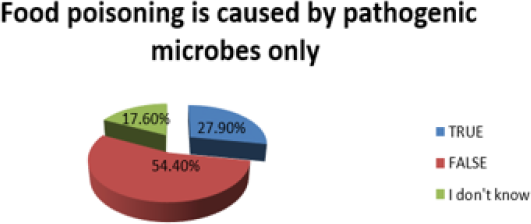
Figure 7: Distribution among study group of knowledge about refrigerator can prevent food poisoning.

Figure 11: Distribution among study group of knowledge about the disease transmitted by food consumption.

Figure 12: Distribution among study group of knowledge about optimum temperature for microbe's growth.
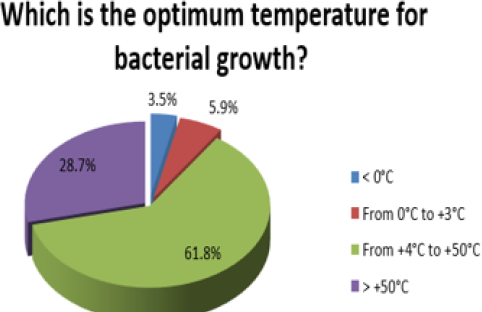
Only 27.90% (38/136) respondents knew that food poisoning is caused by pathogenic microorganisms alone. Ninety-three (93) participants corresponding to 68.4% know consuming raw or half-cooked meat is risky for health of consumers. 61% (83/136) and 27.2% (37/136) of the participants responded correctly to items such as prevention of food poisoning by refrigerating food. Out of 9 knowledge testing questions, maximum correct response is found to have come up for items like insects transmitting foodborne pathogens (86%; 117/136) and microbial growth being faster in summer season (74.3%; 101/136). Another item where high number of respondents answered accurately is related to diseases transmitted by ingestion of contaminated foods for which 73.5% opted for hepatitis-A. A high score is also seen for item such as optimum temperature needed for bacterial growth (61.8% answered correctly). These high number of correct responses are appreciable even though most of them are non-health field occupation's.
It sheds light on the fact that local residents of Taif city are knowledgeable about the facts related to food safety and hygiene. As far as knowledge of signs and symptoms caused by food intoxication is considered, 50% managed to give a correct answer; for which they answered that it depends on the organism. However, remaining 50% gave incorrect answer out of which 6.6% (9/136) say that fever, sore throat and cough are caused because of food intoxication. This could be due to the fact that higher number of survey participants occupation is outside the health field as compared to health field occupation's. So, they are not much aware of the signs and symptoms caused by pathogenic microorganisms. For items number 5-11 with options such as "true", "false" and "do not know", the percentage of respondents who did not know the correct answer varies between 9.6 % to 41.9%. Overall, the mean percentage of correct entries among the surveyed population is 57.5% (± 24.6), whereas the mean percentage of incorrect entries is found to be 22.2% (± 18.2).
Figure 14: Distribution among study group of attitude and practice about trimming nail.
Note: Food safety attitude and practice.

Figure 15: Distribution among study group of attitude and practice about cutting meat and vegetables with the same knife.
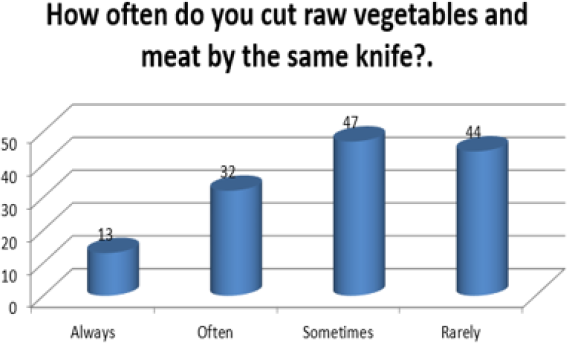
Figure 16: Distribution among study group of attitude and practice about washing hand before handling food.
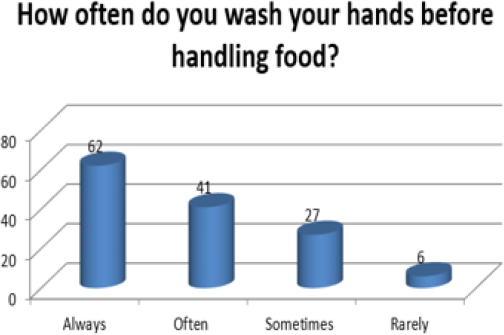
Figure 17: Distribution among study group of attitude and practice about check of refrigerator temperature.
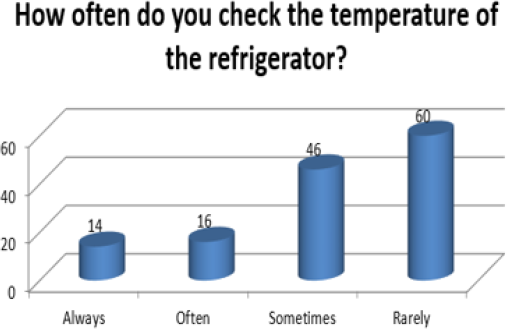
Figure 18: Distribution among study group of attitude and practice about reading the expiry date of food items.
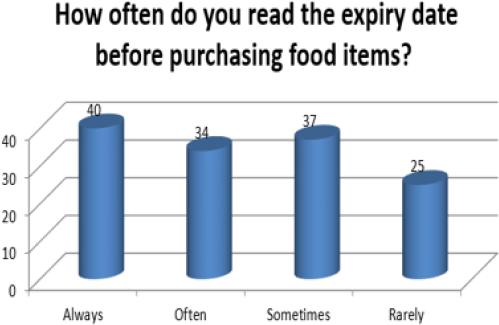
The remaining percentage of respondents who do not know the correct answer is 20.4% (± 11.2). The food safety attitudes and practice of all the respondents has been shown in Figures 14 - 20. The response to these survey questions are answered as "always", "often", "sometimes" and "rarely". All these items relate to the frequency of attitudes and good practice in context of food safety, such as trimming nails, cutting raw vegetables and meat using same knife, washing hands before handling food, checking temperature of refrigerator, reading expiry date before purchasing food items, reading instructions written on packaged foods and frequency of eating raw eggs. The results found are not so encouraging as far as food safety attitude and practice is concerned. Maximum number of responses in favor of good attitude and practice are found in only two of the seven items; always or often trimming nails (79.4%) and washing hands before handling food (75.7%); others show a very low score. On an average, considering all the seven items, only 50.9% of survey respondents show good attitude towards food safety. The remaining 49.1% respondents are only "sometimes" or "rarely" considerate over good practice.
Figure 19: Distribution among study group of attitude and practice about reading the instruction on packaged food.
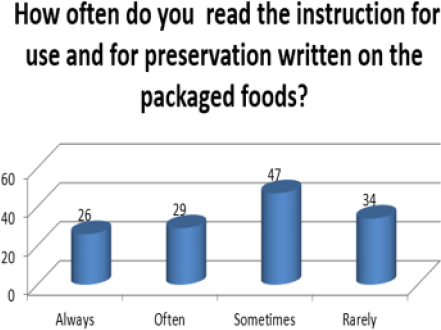
The response of consumption of raw eggs is somewhat appreciable as 91.2% show a favorable response. It is seen from the mean percentages that there is not a major difference between right food safety knowledge (57.5% correct responses) and good attitudes and practice for food safety (50.9%) among all the survey participants. Food-borne diseases, an increasing public health problem, are causes for worldwide morbidity and mortality. Different types of pathogens are the main cause of more than 250 food borne diseases [23, 24]. In Saudi Arabia, food poisoning is becoming a very serious health issue [25]. Food may be mishandled during storage, during preparation or before its consumption at home, thus leading to cross-contamination and microbial growth in food. These situations can be brought under control if consumer have the necessary knowledge for prevention. Therefore, awareness of consumers regarding proper food handling as well as good cooking practices is imperative [26]. It is seen in this study that almost half of the respondents have a good knowledge about food safety.
They are aware that eating raw or half-cooked meat is highly detrimental to one’s health and that refrigeration helps in preserving the integrity of food, thereby preventing food poisoning. They also know well that microbial growth is faster in summer season due to optimum temperature necessary for microbial growth; and that some insects may be a potential source of transmitting food-borne pathogens. Furthermore, there were variations among the respondents in answering correctly in both knowledge, their attitudes for food safety and practice of personal hygiene such as trimming nails and washing hands before handling food. Therefore, they need to increase their awareness in these domains, in the light of their responses. In conclusion, the results of this study shed light on the fact that food consumers in Saudi Arabia should view mishandling of food as a direct threat to their health. This necessitates launching a food safety training program from the responsible authorities emphasizing all food safety parameters.
One of the limitations of this study is the small sample size. The results would be more conclusive with an optimal sample size. Another limitation is that food safety attitudes and practice were assessed through self reporting method and the conclusion drawn could be overestimation of actual practices.
Authors acknowledge the valuable assistance provided by Miss Asmaa Mahmoud Khalifa, news editor for her tremendous help and support to finalize this research study.


